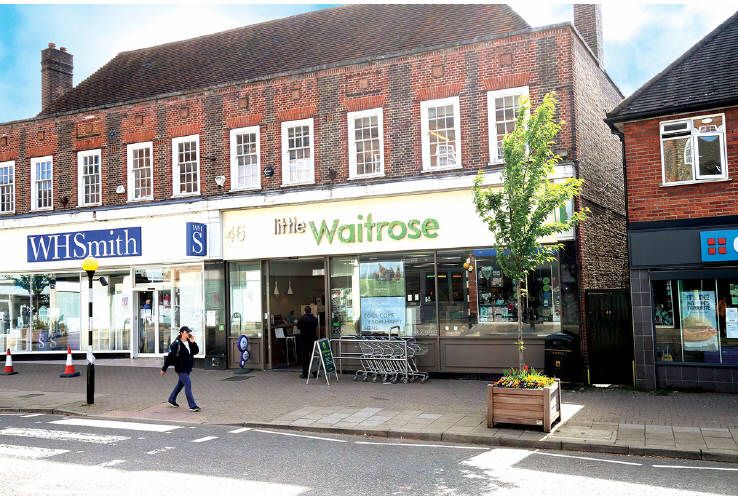By Kayleigh Martin
•
February 18, 2020
HM Treasury presently collects circa £30 billion per annum in business rates. The retail sector comprises around 5% of the UK’s economy, but it pays 25% of the business rates bill. With a 98% collection rate, the tax is easy to collect and difficult to evade, so changes to it have been resisted or ignored by the government, despite the significant evidence as to how damaging to the business community the hugely excessive assessments presently are. The present intolerable situation stems back to April 2010 when the 2008 revaluations came into force. Two torrid years had put the economy, and retail in particular, in a very different place from the booming market and high rental values, which had pertained up to mid -2007, and on which evidence the Valuation Office had based its revaluations. Government then exacerbated the situation, with an incredibly myopic decision to delay the next revaluation by two years, from 2013 to 2015, for imposition in April 2017. Whilst London and much of the M25 “Golden Ring” had continued to see rental growth through that period, the rest of the country had seen serious decline; so the excessive business rates payable by struggling retailers in Bolton subsidised business rates for the booming retailers of Bond Street, for two more years than should have been the case. To add insult to injury, the major on-line retailers, such as Amazon, operate from warehouse buildings assessed on warehouse values, despite retailing their products therefrom directly to the public. So not only are these American behemoths avoiding tax by invoicing their British customers from low tax regimes, such as Ireland and Luxembourg, but are also paying a fraction of their fair share of the business rates burden. A further appalling impost on the business community is the empty property rate, hugely increased in 2008 by Gordon Brown, when Chancellor, from 25% to 100% of the rates payable. When business rates were fairly charged, empty premises had full relief, for they consume minimal public services whilst unoccupied. Centrepoint was the catalyst for the introduction of payable rates on empty buildings. Its developer, the legendary Harry Hyams, was wrongly accused of keeping the building empty to take advantage of rising rental values. He successfully sued several papers and journalists who published that canard. What had actually occurred was that his architect, Richard Seiffert, when designing the building which was, the UK’s first skyscraper, had not allowed for a sufficiency of lifts, in the event that the building was let for multi-occupation, presuming its prestige would attract a single tenant. In fact, British Steel did agree to take the entire building as their Headquarters, until an Labour MP challenged the proposed transaction in the House, contending that British Steel should relocate to offices in Southwark at half the rent. As a consequence, BS withdrew from the proposed Tenancy. It then took several years for the building to be let, after further investment to render it more suitable for multiple occupation. But the resultant erroneous political heat created a demand for the imposition of empty rates, which came into force at 25%. Unfair, but not penal, which at 100% it now has been since April 2008. Retail rental values have crashed over the last few years, due to the perfect storm of excessive business rates; BREXIT; on-line sales growth to some 20% of retail spend; changing consumer spending habits; the introduction of the national minimum wage; and an excess of available retail premises. A considerable number of substantial national retailers have entered into Company Voluntary Arrangements (CVAs), securing swingeing rent reductions from hard-pressed Landlords. We now frequently see properties where the rates payable are 100%, or more of the current rental value, with the consequence that Landlords are forced to concede even lower rents to Tenants, to subsidise their excessive business rates bills. The government’s recent response to this appalling situation has been to exacerbate it, by amending the appeal procedure to make it much more tortuous and extenuated, so that it is now a typically three year process from start to finish. It does not help that the Valuation Offices have been so starved of funds that they just do not have the staffing levels to deal expeditiously with appeals against excessive assessments. The concession now available on premises with a Rateable Value of less than £51,000 applies a sticking plaster where major surgery is required. Traditionally, business rates payable were set at around one-third of the market rental value, but government’s need for funding over this decade of austerity has placed a grossly unfair tax burden on the business community, rather than on the population as a whole, since business commands far fewer votes than the general public. What is needed is a return to the traditional position that business rates occupied, payable at around one-third of market rental value, with empty property rates levied at a much fairer 20%. Concessions for Listed Buildings and charitable occupations could then be withdrawn. The significantly reduced consequential yield to the Treasury could be replaced by a long overdue reform to the Council Tax bands. In England, these have remained unchanged since their introduction in 1991, at a top band rate over £320,000, whilst house prices nationally have more than trebled over the last 30 years. Top band householders currently pay the same amount of Council Tax, circa £2,500, whether their house is worth £320,000, £3.2 million, or £32 million. Additional Council Tax bands should be introduced at £500,000; £1 million; and £2 million. With the introduction of these additional higher bands, Council Tax should then increase to £5,000; £10,000; and £20,000 respectively, with mitigating arrangements for properties in single occupation and householders of pensionable age. Stamp Duty should simultaneously be set back to a sensible 1/2% level, thereby boosting the economy by restoring an more active housing market, encouraging homeowners to move more frequently, rather than over-developing their homes with disruptive basement extensions or inappropriate loft conversions. It is not acceptable that the business community continues to bear this excessive tax burden, whilst householders are not required to pay their fair share. Local Authority cut-backs would also be largely restored by this reform to property taxation. Understandably, administrations of recent years have lacked the commanding majority and the cojones to grasp the nettle of this required reform and rebalance. The Johnson Administration with its 80 seat majority and a five year term of governance ahead of it, should commit to implementing this essential reform within the first twelve months of its term. The retail scene in Germany could not be more different than that of the UK today, not having put itself through the needless agony of a GREXIT, with on-line retail sales penetration at only 8% of retail spend, rather than the 20% in the UK; and with no equivalent tax to business rates levied on German business premises. Their High Streets are vibrant, with fully occupied shops and a strong consumer spend. In summary, the single most effective action that government could take to assist High Street recovery and restore Local Authority revenues is by a fair and sensible reform of business rates, cancelling the last two revaluations and setting Rateable Values back to the 2005 valuations, which will generally align with retail market rental values, excepting London and its M25 Hinterland, and off-setting the cost to H.M Treasury by a reformation of the Council Tax top band structure, whilst reducing Stamp Duty to the sensible levels at 1/2%, which applied in the 1980’s and 1990’s. Anthony H Ratcliffe Ratcliffes Chartered Surveyors







